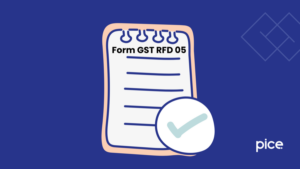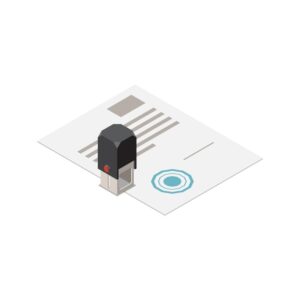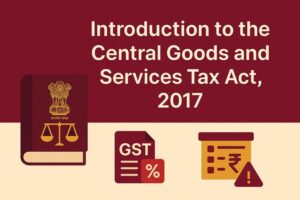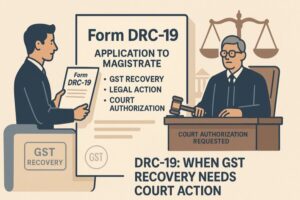The Quarterly Return Monthly Payment (QRMP) Scheme under GST
- 9 Aug 24
- 17 mins

The Quarterly Return Monthly Payment (QRMP) Scheme under GST
Key Takeaways
- The QRMP scheme simplifies GST compliance for small and medium taxpayers by allowing them to file returns quarterly while making tax payments monthly.
- Taxpayers with an annual turnover of up to Rs. 5 crore are eligible for the QRMP scheme, offering them flexibility and ease in managing GST obligations.
- The scheme offers two payment methods - the Fixed Sum Method (FSM) and the Self-Assessment Method (SAM), providing options based on the taxpayer's preference and cash flow.
- Interest is applicable under the QRMP scheme for delayed tax payments and late filing of returns, emphasizing the importance of timely compliance.
- Opting for the QRMP scheme is optional, giving taxpayers the choice to either stick with the standard monthly filing or opt for a more manageable quarterly filing schedule.
The Quarterly Return Monthly Payment (QRMP) scheme under the Goods and Services Tax (GST) framework represents a significant shift towards simplifying compliance for small and medium taxpayers in India. Introduced to ease the tax filing and payment process, this scheme allows eligible taxpayers to file returns quarterly while making tax payments monthly.
What is the QRMP in GST?
The QRMP scheme is a strategic initiative by the Indian government, aimed at reducing the compliance burden on small taxpayers. It is designed for taxpayers with an annual turnover of up to Rs.5 crore, enabling them to file GSTR-3B returns on a quarterly basis instead of monthly basis.
Under the QRMP scheme, taxpayers can benefit from a streamlined process that eases the administrative and financial burden associated with monthly return filings. While the scheme mandates monthly payment of taxes, based on either a fixed sum method or a self-assessment method, the actual return filing is required only once every quarter.
This approach helps in improving cash flow management for small businesses and reduces the time and resources spent on monthly compliance activities.
Why is the QRMP Scheme important?

This scheme is crucial as it balances the cash flow for small business owners, making GST compliance more manageable and less time-consuming. It also aims to enhance the ease of doing business in India by streamlining tax payments and filings. There are several other benefits to this scheme.
| Aspect | Importance of the QRMP Scheme |
|---|---|
| Compliance Burden | Reduces the compliance burden on small taxpayers by allowing quarterly return filings instead of monthly basis, making GST compliance more manageable. |
| Cash Flow Management | Enhances cash flow management for businesses by requiring monthly tax payments, which helps in better financial planning and budgeting throughout the quarter. |
| Administrative Efficiency | Improves administrative efficiency by simplifying the tax filing process, thereby saving time and resources that can be allocated to other critical business operations. |
| Flexibility | Offers flexibility to taxpayers, providing them with the option to opt-in or opt-out of the scheme based on their business needs and compliance capabilities. |
| Ease of Doing Business | Contributes to the ease of doing business in India by streamlining GST procedures for small and medium enterprises (SMEs), which are a vital part of the economy. |
| Technology Utilization | Encourages the use of technology in compliance through the GST portal, making the process more transparent and less prone to errors. |
| Financial Discipline | Promotes financial discipline among businesses by mandating monthly tax payments, ensuring a steady flow of revenue to the government while aiding businesses in avoiding large tax liabilities at the end of each quarter. |
| Support for SMEs | Specifically supports small and medium-sized enterprises (SMEs) by acknowledging their unique challenges in compliance and financial management, thus fostering growth and sustainability in this crucial sector. |
Availing the QRMP Scheme

If you are a previously registered taxpayer:
- Eligibility Check: Ensure that your business's annual aggregate turnover does not exceed Rs. 5 crore in the previous financial year to be eligible for the QRMP scheme.
- Opt-In Process: You can opt for the QRMP scheme via the GST portal. This option is available in the dashboard of the GST portal, under the 'Services' menu. Look for the option to 'Opt into QRMP scheme' and follow the prompts.
- Timing: The choice to opt into the QRMP scheme must be exercised before the beginning of the first month of the quarter for which you want to avail of the scheme. For example, if you wish to opt for the QRMP scheme for the January-March quarter, you should opt-in by the end of December.
- Quarterly Filing: Once opted in, you can go for Quarterly GSTR-3B filing and make monthly tax payments through the challan.
If you are a newly registered taxpayer:
- Immediate Eligibility: As a newly registered taxpayer, you are immediately eligible for the QRMP scheme if your expected annual turnover is within the Rs. 5 crore limit.
- Opt-In During Registration: You can opt for the QRMP scheme at the time of GST registration. The option to choose the QRMP scheme should be available as part of the registration process on the GST portal.
- Post-Registration Opt-In: If you did not opt for the QRMP scheme during registration, you could still opt-in through the GST portal by following the same process as existing taxpayers. Ensure this is done before the deadline for the quarter you wish to start availing of the scheme.
- Compliance: As with previously registered taxpayers, you will need to file GSTR-3B quarterly and make monthly tax payments using the prescribed challan.
💡Note: It's important for both previously registered and newly registered taxpayers to regularly check the GST portal for any updates or changes to the scheme's guidelines and deadlines. Additionally, staying informed about your compliance obligations under the QRMP scheme will help ensure that you benefit from the scheme's provisions without any compliance issues.
Operational Details of QRMP Scheme
When can one opt for the QRMP scheme and submit returns?
Opting for the QRMP (Quarterly Return filing and Monthly Payment) scheme and submitting returns under it are governed by specific time limit set by the Goods and Services Tax (GST) framework in India. Here's a detailed look at when one can opt for the QRMP scheme and the submission of returns:
Opting for the QRMP Scheme
- Opt-In Period: The registered person can opt for the QRMP scheme at the beginning of a quarter. The GST portal allows taxpayers to make this choice for the upcoming quarter during a specified window period. This window is typically open in the last month of the preceding quarter. For example, to opt for the QRMP scheme for the January-March quarter, a taxpayer needs to make the selection between the 1st and the last day of December.
- Continuous Option: Once opted in, the scheme continues to apply for future quarters unless the taxpayer opts out. This means there's no need to opt in every quarter as long as the eligibility criteria (annual aggregate turnover of up to Rs. 5 crore) are met.
- Change in Preference: If the registered person wishes to opt out of the QRMP scheme or switch between monthly and quarterly filing, they must do so in the last month of the current quarter for the change to apply for the next quarter.
Submitting Returns under the QRMP Scheme

- Monthly Payment of Tax: While returns are filed quarterly, taxpayers must pay their estimated tax dues monthly. This payment is due by the 25th day of the month following the month for which the payment is being made. For example, for taxes due for the month of January, the payment must be made by February 25th.
- Quarterly Return Filing: The actual GST returns under the QRMP scheme, specifically the GSTR-3B, are filed on a quarterly basis. The due dates for filing GSTR-3B under the QRMP scheme are as follows:
- For taxpayers in Category X states/UTs, the due date is the 22nd of the month following the quarter.
- For taxpayers in Category Y states/UTs, the due date is the 24th of the month following the quarter.
What are the Payment Methods Under the QRMP Scheme?
Under the QRMP (Quarterly Return Filing and Monthly Payment) scheme, taxpayers have two primary methods to make their monthly tax payments. These methods are designed to offer flexibility and ease the process of tax payment under the Goods and Services Tax (GST) framework in India. The two payment methods available under the QRMP scheme are:

1. Fixed Sum Method (FSM)
It is also known as the 'Challan Method', under FSM, the taxpayer is required to pay a fixed sum or an amount pre-calculated by the system for the first two months of the quarter. This pre-determined amount is based on the tax paid in the previous quarter. Specifically, for taxpayers who have filed GSTR-3B for the entire previous quarter, 35% of the tax paid in cash during that quarter is the amount to be paid.
2. Self-Assessment Method (SAM)
Under SAM, taxpayers calculate their tax liability for the month by considering the tax payable on outward supplies (sales) and deducting the eligible input tax credit (ITC) available. The taxpayer then pays the net tax liability for the month. This method requires the taxpayer to assess their tax liability each month based on actual sales and purchases, offering a more precise approach to tax payments based on current business activity.
Applicability of Interest Under the QRMP Scheme
The applicability of interest is an important consideration for taxpayers. Interest under the QRMP scheme is applied based on the timely or delayed payment of tax dues. Here’s how interest applicability works under this scheme:
| Aspect | Time Limit | Detail | Interest Rate |
|---|---|---|---|
| 1. Monthly Tax Payments | On Time | No interest is charged for timely payments made in the first two months of the quarter using FSM or SAM. | 0% |
| Delayed | Interest is applicable on delay in payment from the due date until the payment date. | 18% per annum | |
| 2. Quarterly Tax Return Filing | Shortfall | If the tax paid is less than the actual liability for the quarter, interest is charged on the shortfall from the due date of the third month's payment until payment. | 18% per annum |
| Excess Payment | For overpayment, no interest is charged. The excess can be refunded or adjusted against future liabilities. | 0% | |
| 3. Delayed GSTR-3B Filing | Interest is charged on the net tax liability (after ITC) from the day after the filing due date until the filing date. | 18% per annum | |
| 4. Input Tax Credit (ITC) | No interest is charged on availed and utilized ITC for tax payment. | 0% |
Taxpayers under the QRMP scheme should be diligent in making their tax payments and filing returns on time to avoid the applicability of interest. Proper planning and estimation of tax liabilities using the chosen payment method (FSM or SAM) can help in ensuring compliance and minimizing the cost of borrowing due to delayed payments.
Compliance under QRMP Scheme
Compliance with the QRMP (Quarterly Return filing and Monthly Payment) Scheme involves specific steps for making tax payments, filing returns, adhering to due dates, and understanding the implications of late submissions. Here's a detailed guide:
Steps to Make Tax Payments Under the QRMP Scheme
- Choose the modes of Payment Method: Decide between the Fixed Sum Method (FSM) and the Self-Assessment Method (SAM) for the first two months of the quarter.
- Generate Challan: For FSM, the system generates a pre-filled challan based on past tax payments. For SAM, calculate the tax liability and generate the challan manually.
- Make Payment: Pay the calculated tax amount by the 25th of the month following the month for which tax is being paid. Ensure payments are made through the official GST common portal or through authorized banks.
If you want to pay your GST Challan with Credit Card, then download the Pice Business App. Pice is a one stop payment app for all business expenses. Download today and make all your payments instantly at the lowest charges.
Quarterly Filing of Form GSTR-3B
The Quarterly Return filing and Monthly Payment (QRMP) scheme allows eligible taxpayers to file their GSTR-3B forms on a quarterly basis while making tax payments monthly. This approach aims to simplify the compliance process for small and medium-sized businesses. Here's a detailed guide on the quarterly filing of Form GSTR-3B under the QRMP scheme:
Preparing for Filing
- Consolidate Transactions: Collect and consolidate all taxable transactions, including sales and purchases, for the quarter.
- Calculate Tax Liability: Calculate the total GST liability for the quarter, taking into account the GST collected on sales and the input tax credit (ITC) available from purchases.
- Adjust Monthly Payments: Deduct the tax amounts already paid during the first two months of the quarter through monthly tax payments under the QRMP scheme.
Filing Process
- Access the GST Portal: Log in to the GST portal using your credentials.
- Navigate to GSTR-3B Form: Select the 'Services' menu, then 'Returns Dashboard'. Choose the relevant financial year and quarter for which you need to file GSTR-3B.
- Fill in the Details: Enter the consolidated details of your transactions, including total sales, total purchases, total GST collected, and total ITC availed for the quarter.
- Verify Liability: Ensure that the tax liability for the quarter, after adjusting the monthly payments made, is accurately reflected.
- Submit the Form: After reviewing all the information for accuracy, submit the GSTR-3B form for the quarter.
Due Dates for Filing Quarterly GSTR-3B

The due dates for filing the quarterly GSTR-3B are specifically set to facilitate smooth compliance for taxpayers. These due dates are determined based on the category of the state or union territory the taxpayer is registered in. Here's a breakdown:
- For Taxpayers in Category X States/UTs: The due date for filing GSTR-3B is the 22nd day of the month following the end of the quarter. For instance, for the January-March quarter, the due date would be April 22nd.
- For Taxpayers in Category Y States/UTs: The due date for these taxpayers is the 24th day of the month following the end of the quarter. Using the same example, for the January-March quarter, the due date would be April 24th.
The categorization of states into Category X and Y is provided by the GST council and can be checked on the official GST portal or through GST notifications.
Due Dates for Filing Quarterly GSTR-1
The due dates for filing the quarterly form GSTR-1 vary based on the turnover of the taxpayer and the specific rules set by the GST Council. For taxpayers who opt for the quarterly filing under the QRMP (Quarterly Return Filing and Monthly Payment) scheme or those eligible for quarterly filing due to their turnover, the due dates are as follows:
- For the January to March quarter: The due date is the 13th of the following month, i.e., April 13th.
- For the April to June quarter: The due date is July 13th.
- For the July to September quarter: The due date is October 13th.
- For the October to December quarter: The due date is January 13th of the following year.
These dates are designed to provide a systematic timeline for businesses to prepare and file form GSTR-1 returns without overlapping with other GST compliance requirements. It's important for taxpayers to adhere to these deadlines to avoid any late fees or penalties and to ensure a smooth compliance process. Always check for any notifications or changes in due dates on the official GST portal, as the GST Council may make adjustments based on prevailing conditions or feedback from the business community.
Late Fee Under QRMP Scheme
The QRMP scheme also specifies the imposition of late fees for the delayed filing of GSTR-3B returns. The late fee framework under the QRMP scheme is designed to encourage timely compliance and is as follows:
- General Late Fee: A late fee is charged for the delay in filing GSTR-3B. The fee is calculated from the day following the due date till the date of actual filing. The late fee is Rs. 50 per day (Rs. 25 per day for each CGST and SGST).
- Reduced Late Fee for Nil Returns: For taxpayers who have no tax or GST liability for the quarter (Nil returns), the late fee is reduced to Rs. 20 per day (Rs. 10 per day for each CGST and SGST), ensuring that businesses with no transactions or tax liability are not heavily penalized
Scheme Evaluation
QRMP Scheme: Mandatory or Optional?
The QRMP (Quarterly Return filing and Monthly Payment) scheme is optional, not mandatory. It is designed to benefit small and medium-sized businesses by simplifying their GST compliance process. Taxpayers with an annual aggregate turnover of up to Rs. 5 crore in the previous financial year are eligible to opt for this scheme.
The flexibility to choose offers taxpayers the convenience to either stick with the monthly filing and payment system or to opt for the QRMP scheme based on their business needs and compliance capabilities.
Issues or Challenges under QRMP
While the QRMP scheme aims to simplify the compliance process, it comes with its own set of challenges:
- Cash Flow Management: Despite monthly payments, some businesses might find it challenging to estimate their tax liability accurately, leading to either overpayment or underpayment of taxes.
- Reconciliation Issues: Quarterly filing may complicate the reconciliation of invoices with suppliers, especially if they are filing monthly returns. This can affect the timely availing of input tax credit.
- Compliance Overload: At the end of the quarter, businesses might face a compliance overload, needing to manage the payment of taxes and the filing of returns in a short period.
- Awareness and Understanding: Small businesses, especially those without dedicated tax professionals, may struggle to understand the nuances of the scheme, leading to potential non-compliance.
Input Tax Credit Claims under QRMP Scheme
The QRMP scheme allows taxpayers to claim input tax credit (ITC) on a self-assessed basis every month, even though the returns are filed quarterly. This means businesses can continue to claim ITC monthly, helping them maintain their cash flow. However, the actual reconciliation of ITC is done on a quarterly basis when the GSTR-3B is filed.
This approach requires businesses to maintain diligent records and perform regular reconciliations to ensure that all ITC claims are accurate and substantiated by corresponding invoices, as discrepancies can lead to challenges during the quarterly return filing process.
In summary, while the QRMP scheme offers several benefits in terms of reduced compliance burden and improved cash flow management, businesses need to navigate certain challenges, particularly around cash flow management, reconciliation, and understanding the scheme's requirements. Proper planning, regular reconciliation, and staying informed about the scheme's provisions can help taxpayers maximize its benefits.
Conclusion
The QRMP scheme under GST marks a significant step towards simplifying tax compliance for small and medium enterprises in India. By offering a blend of quarterly filings with monthly payments, it aims to reduce the compliance load while ensuring a steady cash flow for the government. As with any new initiative, it comes with its set of challenges, but with the right tools and understanding, taxpayers can navigate these waters smoothly, benefiting from the scheme's intended ease and efficiency.
 By
By 

















